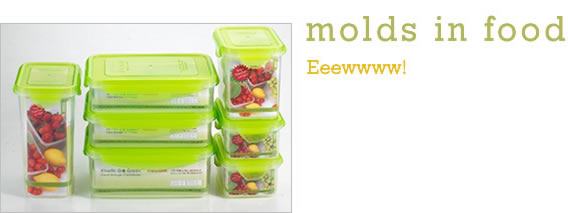Health Tips - Molds in Food

Molds are fungi found everywhere in nature. Molds attack living things and break them down. Over time, this action degrades dead things so that there is more room for new living forms.
Some molds produce toxic chemicals called "mycotoxins". The word mycotoxin is from the Greek "mykes" which means mold.
One common mycotoxin is "aflatoxin". Aflatoxins are a cancer encouraging substance. They are very poisonous to the liver and are likely to be involved in liver inflammation and liver scarring.
Exposure to high levels of mycotoxins lowers body function, can cause allergic reactions, respiratory problems, and lowered immune response. It can lead to nerve problems and in extreme cases, death.
Which foods contain the lowest amount of aflatoxins? Fish, eggs, meat contain the least aflatoxins, plus fresh vegetables and fruit that are thoroughly washed on the outside or peeled.
Which foods contain the highest amount of aflatoxins? Nuts, nut butters, grains, cereals, wine, beer, apple cider vinegar, beans, and dried fruit.
Two things increase aflatoxin production: temperatures hotter than 80°F and humidity levels above 62%.
To reduce mold in your diet:
- Refrigerate your food! In particular, keep your nut butters, nuts, grains, flour, bread, cake, cookies, maple syrup, and cider vinegar in the refrigerator.
- Keep these foods below 20% or less of your diet.
- Use food storage containers, which are infused with silver particles. The silver reduces bacterial and mold growth, keeping food fresher much longer. You can find these containers by searching for "nano silver food storage containers" or try this link to find them.
Read all my nutrition tips to find out how easy it is to keep yourself healthy, and how to get healthier faster.
Here's to healthy eating!
Dr. Pepi
February 3, 2009
